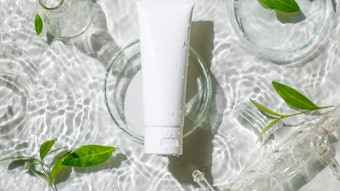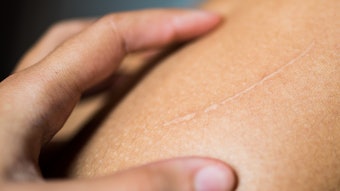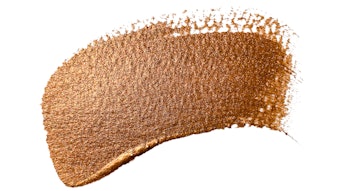Developing a stable cosmetic product requires understanding and reacting to information gathered throughout the formulation process. To ensure a quality product is produced, the scientist must conduct various stability tests to identify issues that may arise. Although some issues may seem obvious, it is better to use the actual outcomes of several tests to form a proper formulation plan. Once the problem is identified, it is prudent to find a quick manner to assess progress and ensure long-term formulation stability to guarantee success; and having instabilities develop quicker will shorten the formulation time.
While it may seem that formula stability would have the same meaning to most of the cosmetic industry, it can vary from company to company. In a recent European conference, consumer attendees were asked, “What would you consider a stable personal care product?” The most common answer was a product that would not be compromised if left in a hot car for a period of time. Although this answer may seem extreme and “less scientific” to some, it exemplifies the high expectations that consumers have, which cosmetic scientists must strive to accomplish. After all, the interior of a car can quickly become as high as 140°F (60°C) in approximately 90 min on a hot, sunny day.1
Troubleshooting most stability concerns in cosmetic formulations typically starts at the usual raw material classes comprising the skin care and makeup ingredient list. In skin care systems, the emulsification system, thickening ingredients, actives and emollients are usually examined. In a makeup formulation, structural items such as waxes and fillers are usually reviewed, as well as film-formers and colorants. Though modifying the ingredient composition must be considered, formulators should rule out any processing or raw material issues first. Adding a non-uniform thickener, for example, can cause an erratic low viscosity dial reading or formula splitting.
Skin Care Separation or Coalescence
One of the most common and major problems a skin care formulator faces is formula separation or coalescence. There are many stability tests that can demonstrate this phenomenon. Emulsions are inherently thermodynamically unstable, so formulators must counteract this property with raw materials and processing. When an emulsion starts to break, the oil and water phase coalesces and separates. A thorough understanding of the theoretical factors influencing emulsion stability, as well as the various types of separation, is therefore important.
Various extremes can be seen in formulation but even the mildest effect performance and aesthetics. There are various mechanisms—Brownian flocculation, creaming, sedimentation flocculation and disproportionation—that can explain why the droplets developed in the emulsion were disrupted.2, 3 Separation can be a complete split but may start off with a grainy appearance or slight oil droplets on the surface of stability jars.
At the first sign of instability, the formulator should look for a quick way to diagnose the problem and possibly accelerate it to replicate the tests while making improvements with modifications. A slight stability problem may necessitate less of a formula adjustment than would a complete split. Formulators must also account for the timing of the instability, and whether it happened in the first week or 10th week of the test, when adjusting their formula.
Makeup Stability
In the color cosmetics world, stability concerns range from product breakage to surface sweating, also known as syneresis. Similarly to skin care, a formulator must know how the product comes together and how to interpret stability and profile tests. In color, one main cause of instability is improper crystallization leading to structural problems. An ordered wax phase is necessary in an anhydrous product, as it sets the structure of the product and keeps the oils from exuding from the mass.4, 5 Gaining further information on the physical properties of an anhydrous product will tell the formulator if it is properly structured and whether it will maintain performance over time. Pinpointing the issue is harder for makeup than for skin care due to makeup’s high dependency on the processing and filling steps. Any number of ingredient or mechanical issues is possible. After making changes in fill settings in attempt to improve stability, it is prudent to compare the stabilities of different formulas with consistent process and fill parameters, to limit the variables.
General Stability Protocols
Although many industry standards serve as the basis for stability testing, some may not be helpful when quick adjustments are needed to stabilize a product and meet agreed upon launch dates. While the general parameters established for stability can pinpoint most issues, it can take up to three months to fully test a product and see instabilities. Obviously, other guidelines must be adhered to for over-the-counter and pharmaceutical products,6-8 but the focus here is using tools to quickly troubleshoot and gauge success, then correlate with traditional long-term stability.
Generally accepted approaches to predict the stability of cosmetics include measuring the product’s resistance to common stresses such as temperature extremes and exposure to light. Accelerated temperature testing is commonly used as a long-term stability predictor. Most companies conduct elevated temperature testing at 37°C (98°F) and 45°C (113°F). Products in elevated temperatures may exhibit separation, a decrease in viscosity or discoloration. The general consensus is that if a product passes stability at 45°C for 12 weeks, it should be stable at room temperature (RT) or on the market for up to two years. Lower temperatures are used to serve as a control as well as show any crystallization that may occur. Additional stability settings are freeze/thaw testing and three cycles of alternating temperature testing, from –10°C (14°F) to 37°C (98°F).
Analysis of these samples should include color and odor evaluation, pH value, viscosity, texture and any signs of separation. Formulators should observe the product as it is taken out of the stability station and when it comes back to RT. Applying the product after it has been through its testing parameter and seeing its flow and spreadability is also essential; in some instances, formulators may notice crystallizing or a slightly oilier pickup. These can be just the beginning of a larger problem and should be monitored. When conducting stability testing with light, different lighting conditions such as fluorescent and natural should be used.
Additional anhydrous tests measure the physical characteristics of the product. Common assessments include breakage point, melting and softening point tests. Combined with the traditional temperature station tests, a formulator can see if the structure is robust enough to withstand an environment. In general, final testing should be done in the product’s actual saleable component, to ensure it can fill and coincide with the package.
Besides traditional stability tests, several others can provide the formulator with more immediate data. These are becoming more common, especially in the skin care segment, which is more globalized. Quicker tests include rheological profile testing, differential scanning calorimetry (DSC) curves, microscopy and mechanical tests.
Microscopy can also be highly beneficial to ensure the particle size of the emulsion droplets is consistent and proper.9 It is important to measure both the droplet size and distribution of the emulsion to provide a control with which to compare compromised samples. In some cases, a formulator can predict instability by seeing larger droplets aggregate in samples, and the distribution curve flatten out or shift to a higher droplet size. Instead of waiting months to see the separation take place in elevated temperatures, microscopy can preempt this development and, at the very least, validate it. Microscopy can also be useful to identify any particulates or crystals in the product. Particulates can exist when a material has not completely solubilized and later agglomerates, or has separated out during stability tests.
Centrifugation is another great way to predict separation. The oil phase of a typical o/w emulsion has a tendency to separate and rise to the top of the emulsion. This is primarily due to the higher density of the oil and an insufficient emulsification and suspension system in the product. One can typically see this instability over time in elevated temperatures but as timing is critical, centrifugation is a great test to observe this phenomenon. The test can be done at RT or elevated temperatures. Various time periods are tried, though the most common are 15–60 min.
Rheology testing, which measures the flow and stress characteristics of a product, has also proven to be a useful tool.10, 11 It can provide different settings in temperature, force and duration. While it is useful in testing emulsion behavior and strength, its greatest benefit may be the ability to compare formulas and batches to see if their profiles are different. Comparing curves to stability can give clues toward a good curve vs. a questionable one. By looking at the rheology profile, one can also gain information on the emulsion breaking point quickly, ideally when the product’s viscosity equilibrates.
A DSC test can provide useful information on the melting point, crystallization events and glass transition temperatures. Also, since it monitors phase transitions during heating and cooling, it can provide a profile of how the product is structured and whether it is compromised during stability testing or filling.
Finally, another immediate and lesser-known test is mechanically shocking the sample to observe if shipping movements compromise the product. This form of vibration testing can determine if a product will stay together. It is especially useful in the case of powders and hot-pour products, which can be susceptible to breakage.
Conclusion
Cosmetic scientists depend on stability tests to maintain product consistency, and they desire the flexibility to modify testing protocols and familiarize themselves with various tools that provide long-term and real-time information. Specific tests may be developed to address new technologies or specific storage environments in certain markets. The toolbox of tests begins with the traditional testing parameters that have been so valuable to the industry, but can be correlated with more information to allow timely decisionmaking and targeted approaches.
References
1. J Null, Car interior becomes an oven, The Weather Channel, www.weather.com/newscenter/specialtopics/slideshows/hotcar061909.html (Accessed Sep 24, 2013)
2. P Becher, Emulsions: Theory and Practice, Reinhold Publishing Corp: New York, USA (1957)
3. P Becher, ed, Encyclopedia of Emulsion Technology, Volume 1: Basic Theory, Marcel Dekker, New York, USA (1983)
4. L Seo, C Shin and A Kang, Observation of the sweating in lipstick by scanning electron microscopy, Int J Cosmet Sci 3 207–16 (Jun 21,1999)
5. A Dweck, The sweating of lipsticks, Cosm & Toil 96 (1) 29–32 (1981)
6. KA Connors, GL Amidon and JS Valentino, Chemical Stability of Pharmaceuticals: A Handbook for Pharmacists, John Wiley, New York, USA (1986)
7. W Grimm and K Krummen, eds, Stability Testing in the EC, Japan and the USA: Scientific and Regulatory Requirements, Wissenschaftliche Verlagsgesellschaft, Stuttgart, Germany (1993)
8. J Wells, Pharmaceutical Preformulation: The Physicochemical Properties of Drug Substances, Ellis Horwood, Chichester, UK (1988)
9. Y Vazquez, A Bravo, J Mantilla and M Alayón, Automatic approach for emulsions stability assessment in microscope images, Digital Image Computing: Techniques and Applications (DICTA) 162-167 (2008)
10. R Brummer et al, Rheological swing test to predict the temperature stability of cosmetic emulsions, 21st IFSCC International Congress, Berlin (2000)
11. TF Tadros, Fundamental principles of emulsion rheology and their applications, Colloid Surfaces A 91 39-55 (1994)










